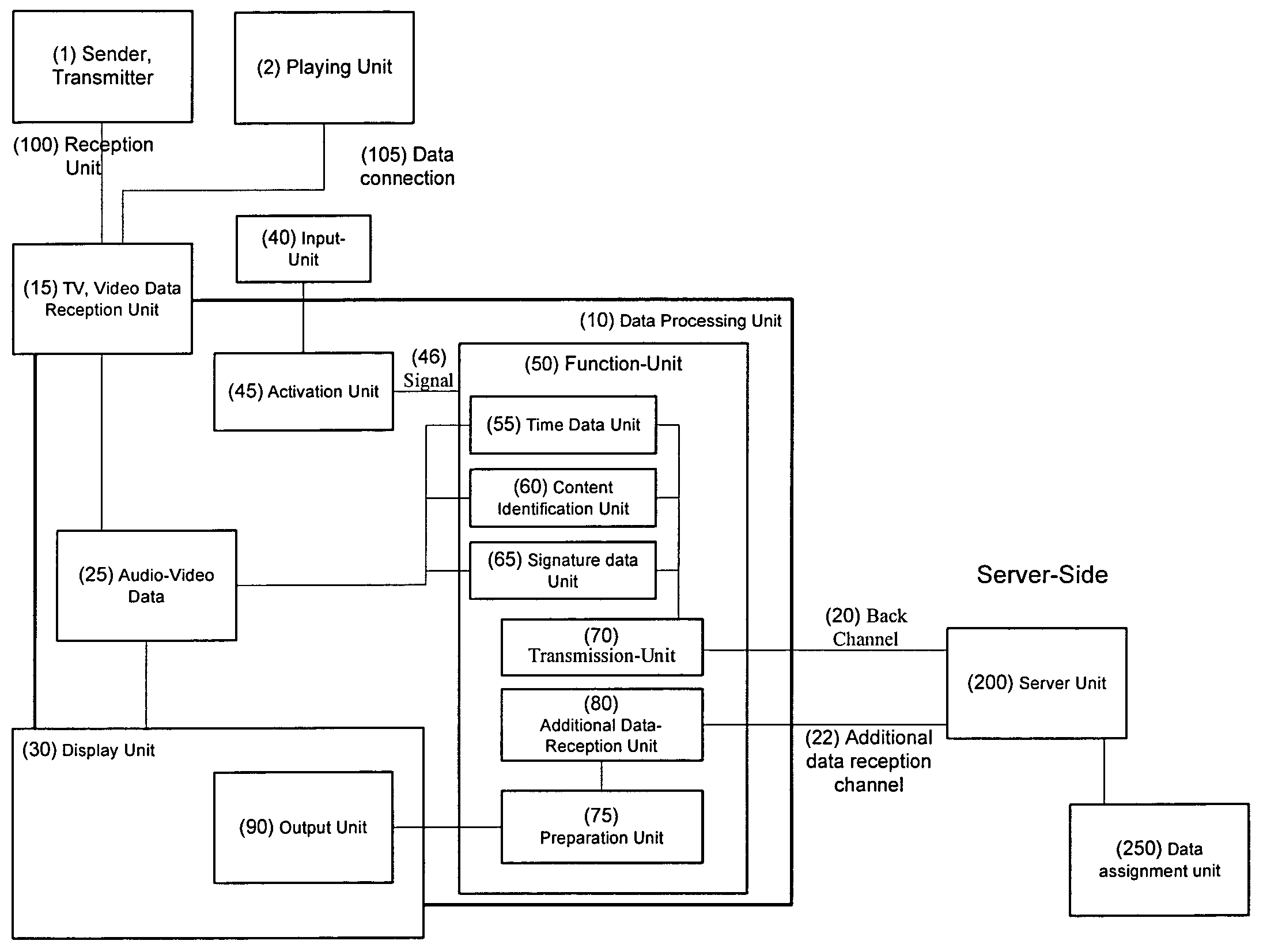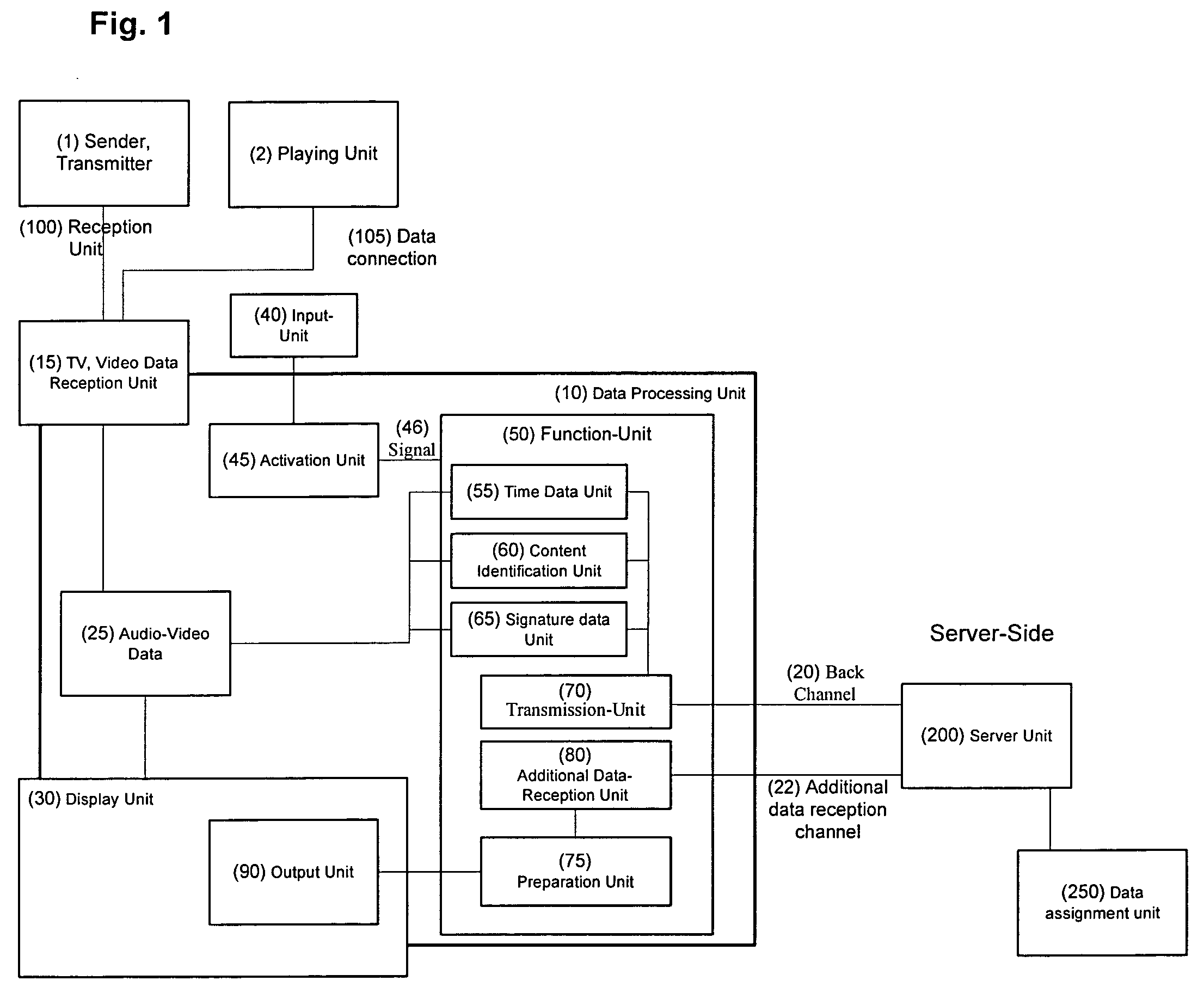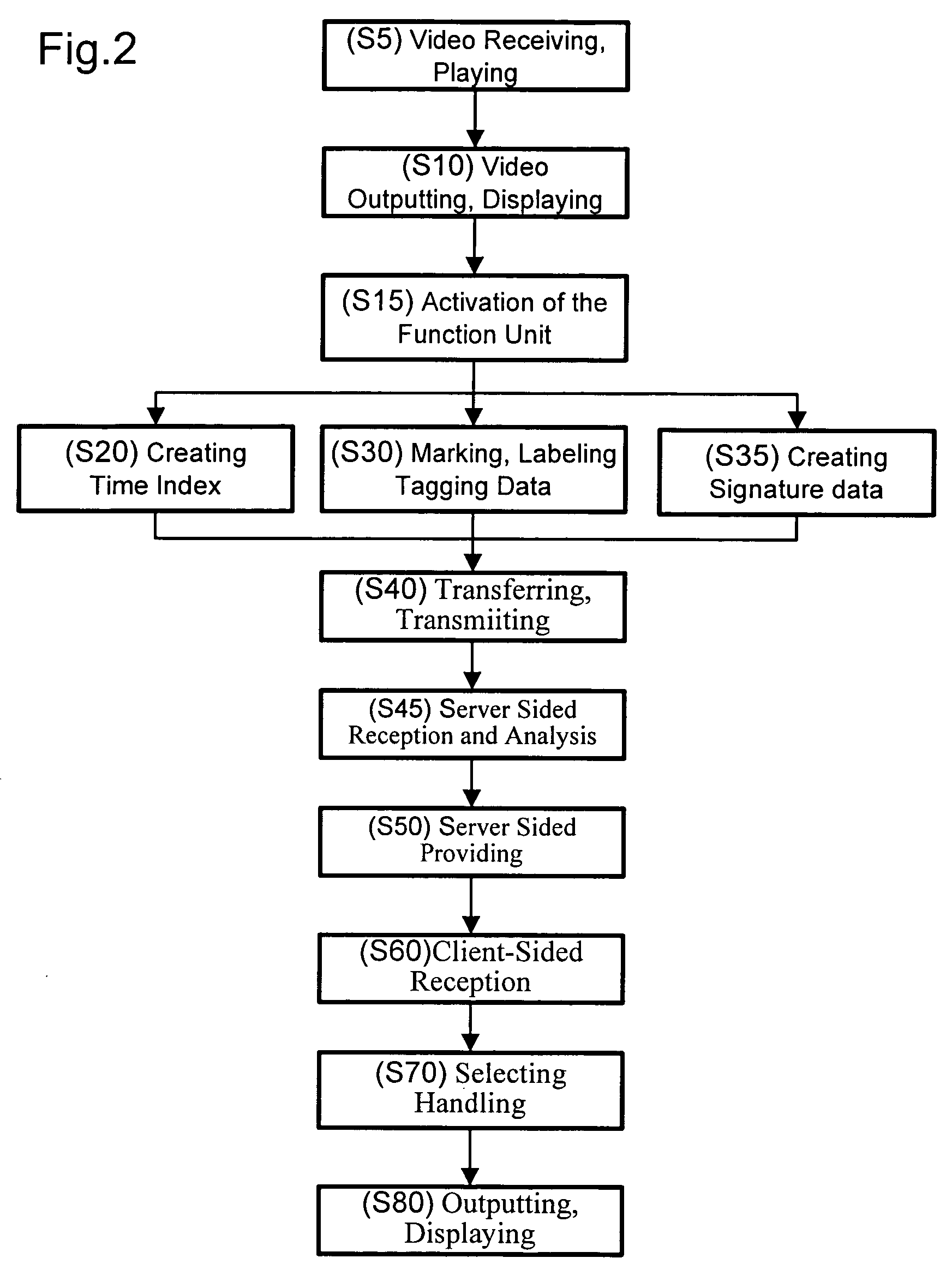Since the extent or amount of provided data is limited within the
data stream, such as into
teletext or VBI, it is difficult to make all desired or desirable additional data accessible to the user.
However, the realizable data transfer rates were completely insufficient to realize more advanced TV / web concepts on this basis.
Because of the limited transmission resources, in particular, because of the limited capacities on the data carrousel within the receiving channel, the choices of the displayable data are limited and therefore this sets narrow limits on individual choices.
These triggers must be inserted in a disadvantaged manner for all data formats or types separately.
A
disadvantage of this technology consists of that every new video file effort arises newly, by which interactive services must be adapted via changed
control data within the interactive services so that a meaningful interaction takes place with the user.
The viewing of interactive broadcast content that is regarded as too complicated and / or too overloaded because of too many buttons and / or selection options for its use can be seen by the passive viewer, who only wants to be entertained, as already too exhausting.
The announced and displayed data do not usually include any data, of how viewers can receive desired data, because the band-width is too low or narrow for interactive services and this bandwidth does not allow personalized functions.
The viewer will consider the interactive supply as unattractive, which is additionally only offered (synchronously) at the moment of the TV program broadcast, since no opportunity or reason exists to watch the many different options of the interactive services within the limited time of the TV program.
The existing interactive TV solutions offer insufficient opportunities for the personalized prioritization and for the server-sided adjustments of the additional data which are offered for the video file and which are corresponding thereto.
The problem arises from the use of the data that are offered in the data carrousel and / or on content inserted as data calls that the data from the interactive request cannot be transferred via the data carrousel after the content has been stored on the video recorder and although the viewer wants to watch or to make use of the content dependent or TV program dependent-interactive service at a later time.
Furthermore, another problem consists of that a user who sees video content, is watching a TV show, a commercial or a scene of a video and based on the seen content of this video, he would like to have additional information.
Due to the high qualitative and quantitative
information density of picture, image and video contents, nobody can in general know in advance what the user is interested in within a video.
Therefore, simply inserting or assigning additional content to the video content or the data carrousel is inevitably insufficient.
Furthermore an important problem from the state of the art technology consists in the use of so-called triggers in video content and in the broadcast
signal.
The
disadvantage of this approach or tactic consists of the missing readiness of the broadcaster or networks, especially for content to which they do not have any further extensive rights, to insert triggers and / or to provide server-sided content.
These triggers can also be lost within the transmission or it can be filtered out by the hardware deliberately or unintentionally.
If the same content shall be output on another platform (for example a PC), then the triggers data, which enable the interaction, may not work and will not be transformed automatically.
Furthermore, a general problem consists therein, that no solution offers platform-independent
interactive content independently of the video format or independent of the possible output platform for video data.
Moreover, there is no method known, in which at any time within the video and / or for the complete video data additional data can be offered, in which without additional expensive
post production the owner or editor of the video content can make use of these content data in different embodiments of the video content.
There is also, according to the state of the art technology, no reliable and flexible method to include or assign in already published or distributed content afterwards further assignments such as links or hyperlinks onto other Web servers which offers for example further textual or multi-
media content.
The initial creation or preparation effort of this mapping is very large and the adding of additional data remains incomplete, because within the creation of the additional data nobody can really know in advance in what a viewer or user of an image is interested in.
Moreover, a viewer cannot recognize which data were connected or provided with additional data or
link data.
A further disadvantage of this technology consist of the circumstance that additional content such as
metadata can only be assigned to the video by the publisher and not via an independent
third party.
Furthermore these methods are very costly and the same video content cannot be connected on the server-side with different information or hyperlinks, which address different
target groups.
Moreover, the additional adding of
metadata or additional data in existing or available content files is very costly and sometimes even impossible, if the file or the video data is not in the direct access by the editor anymore.
Since the content cannot be updated subsequently, these restrictions or limitations are disadvantageous for the usage and / or distribution via
the Internet.
A general disadvantage of existing technologies consist of that the content owner or publisher of distributed material or videos doesn't have any direct contact or access and no connection to the content after publication.
Furthermore, the user or viewer of the content cannot create a connection from the user or viewer side to the content owner, even if the user or viewer wishes to do this.
The creation of a connection, which can contain within it an embodiment, for example the opportunity of communication, can within the known state of the art technology only be recreated with difficulties, in an insufficient and unreliable manner.
Additionally the technology is not designed in a manner that further additional data could subsequently be assigned to the content.
 Login to View More
Login to View More  Login to View More
Login to View More 


